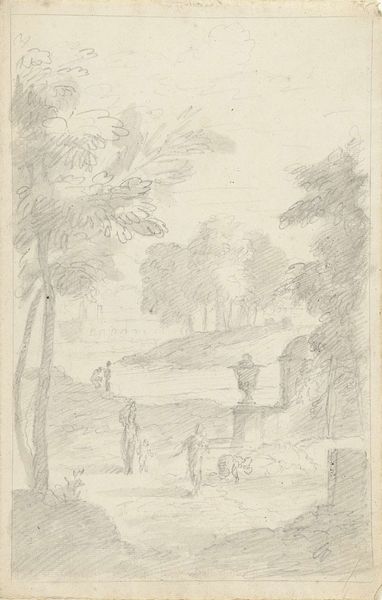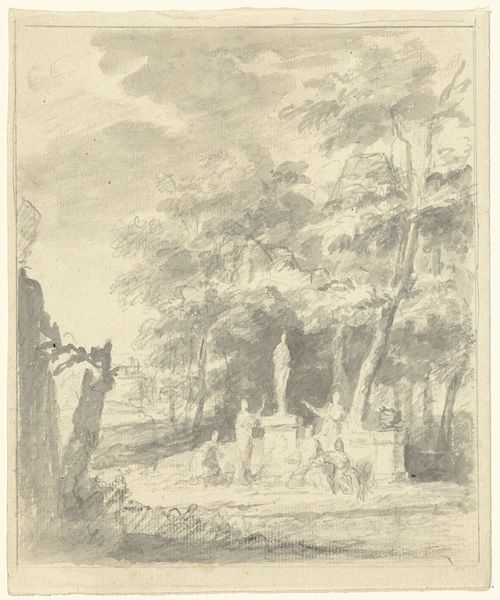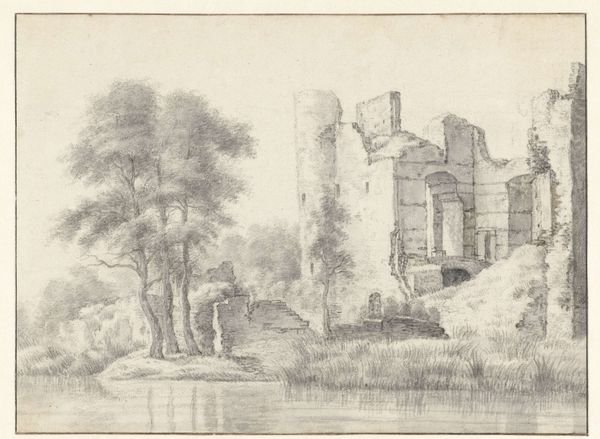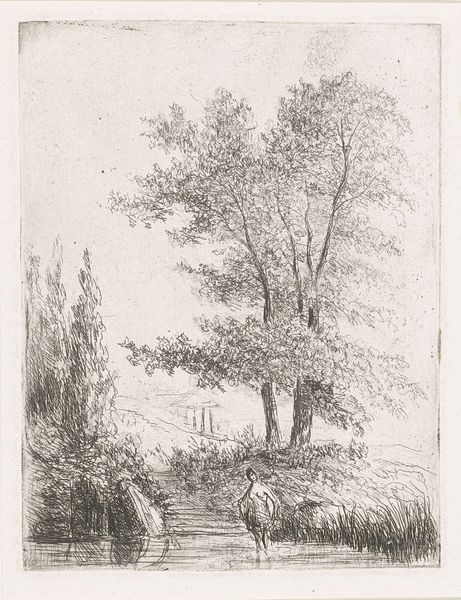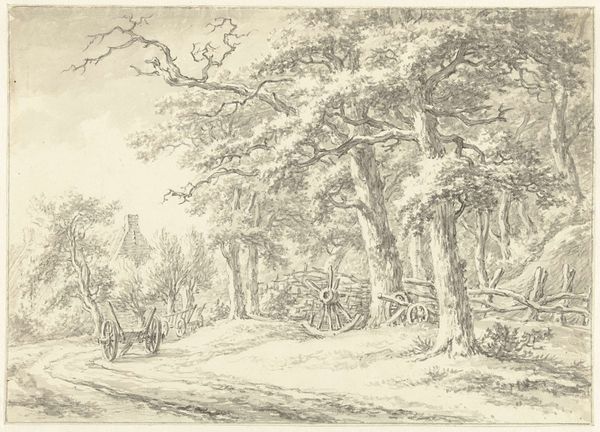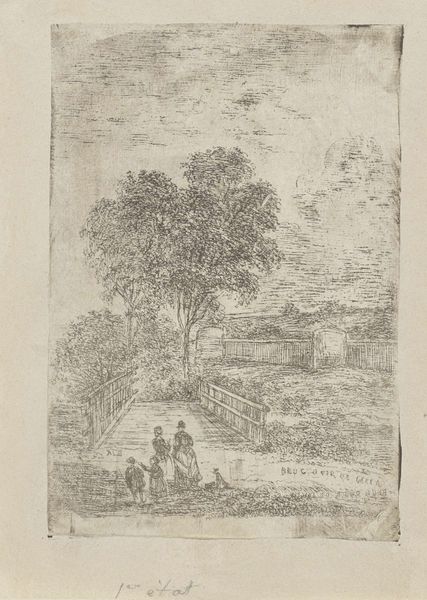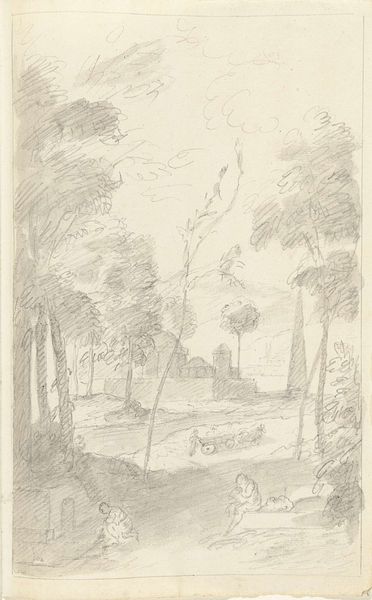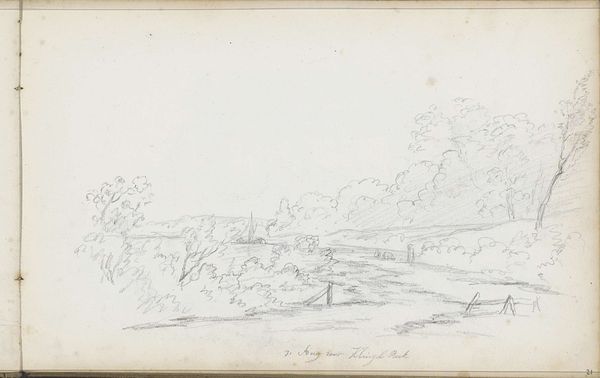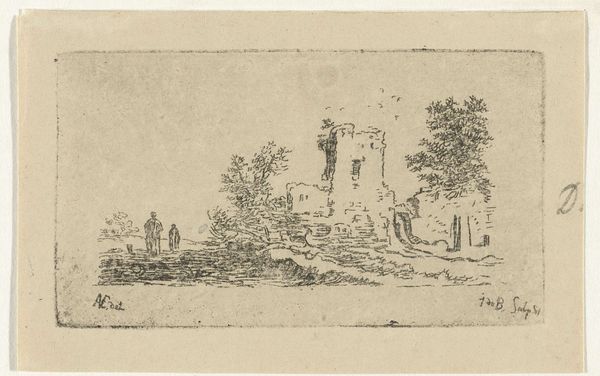
drawing, pencil
#
drawing
#
neoclacissism
#
pencil sketch
#
landscape
#
figuration
#
form
#
pencil
#
realism
Dimensions: height 326 mm, width 210 mm
Copyright: Rijks Museum: Open Domain
Dionys van Nijmegen made this drawing, Arcadisch landschap, using graphite, sometime in the 18th century. It depicts an idealized landscape with classical ruins and figures, a popular subject during the era of the Grand Tour. The term 'Arcadian' has its roots in ancient Greece. It suggested a vision of pastoral harmony, and was especially popular with northern European artists who had never even visited Greece! For Dutch artists in particular, whose nation had only recently become independent, these scenes offered a way of thinking about their national destiny. Should the Dutch become a great empire like the Romans? Or should they become something different, a peaceful nation minding its own business? Here the artist seems to be suggesting the latter path by showing classical ruins in a state of decay. Historians can use various resources, such as travel diaries, literature, and political writings to interpret the nuances of such landscapes. The meaning of art is always contingent on its social and institutional context.
Comments
No comments
Be the first to comment and join the conversation on the ultimate creative platform.
